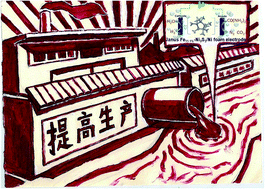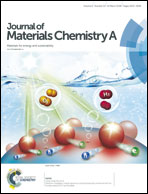Wet-chemistry topotactic synthesis of bimetallic iron–nickel sulfide nanoarrays: an advanced and versatile catalyst for energy efficient overall water and urea electrolysis†
Abstract
In this study, we report that bimetallic iron–nickel sulfide nanowall arrays supported on nickel foam (Fe11.1%–Ni3S2/Ni foam) via wet-chemistry conversion from its LDH precursor could perform the function of a high-performance and versatile catalyst toward both overall water and urea electrolysis in a base. Its efficiency for overall water splitting is superior to those of most newly reported transition metal-based bifunctional catalysts, with small cell voltage of 1.60 V needed to gain 10 mA cm−2. Moreover, this electrode also performs well toward the UOR, requiring very small potentials of 0.284 and 0.372 V (vs. SCE) to achieve 10 and 100 mA cm−2 in 1.0 M KOH with 0.33 M urea. After replacing the anodic OER with the UOR that has a much lower thermodynamic voltage, this urea-mediated water-electrolysis device could sustain an overall current density of 10 mA cm−2 at a low voltage of only 1.46 V (140 mV less than that for its urea-free counterpart) for over 20 h. Also, battery- and solar energy-assisted overall water and urea electrolysis devices were built to explore the viability of future less-energy-intensive and large-scale hydrogen generation.



 Please wait while we load your content...
Please wait while we load your content...